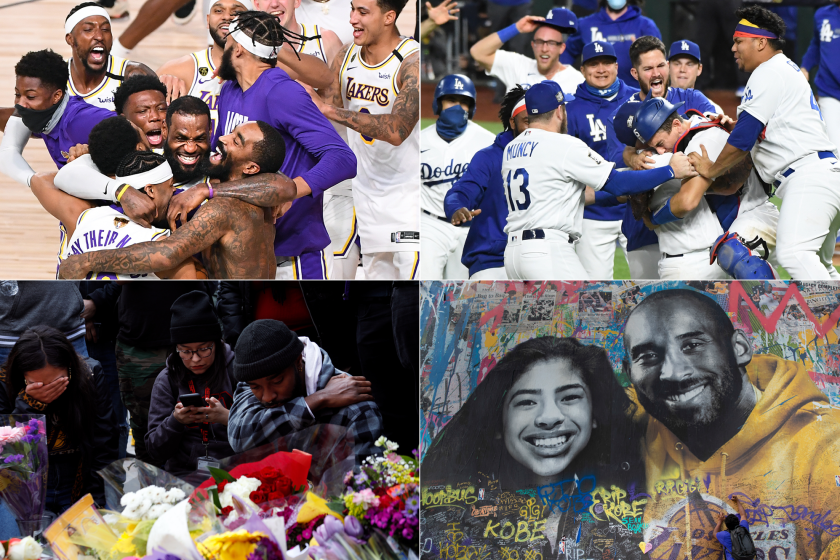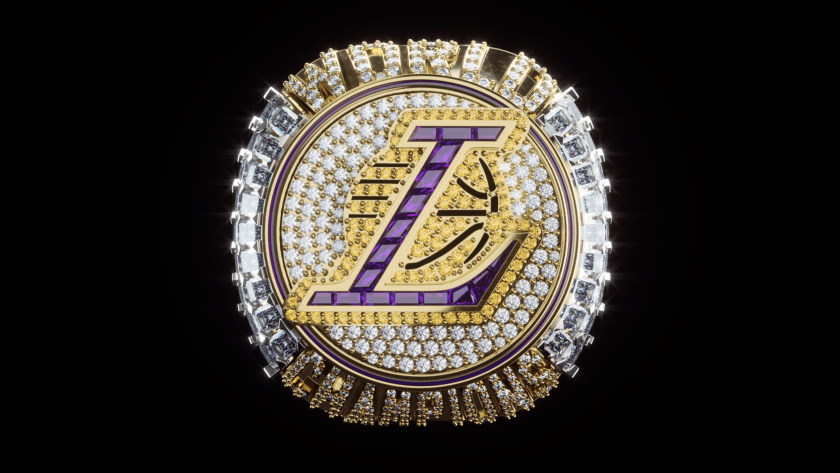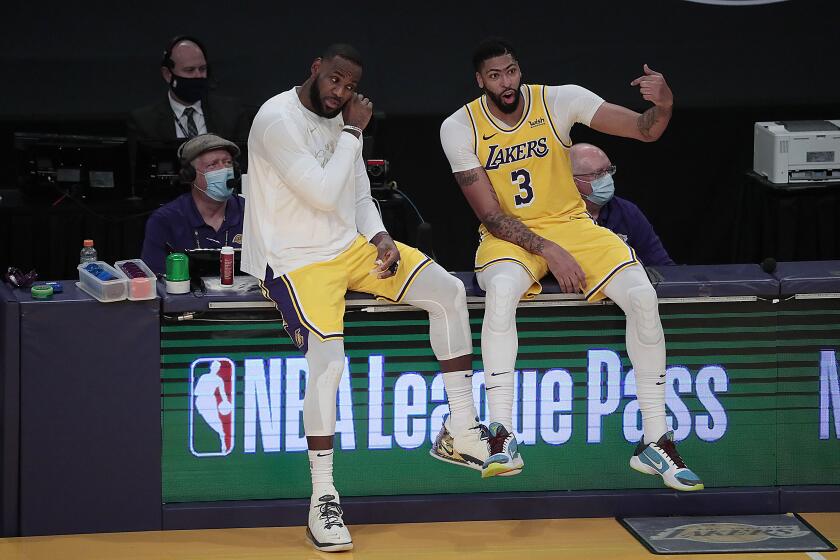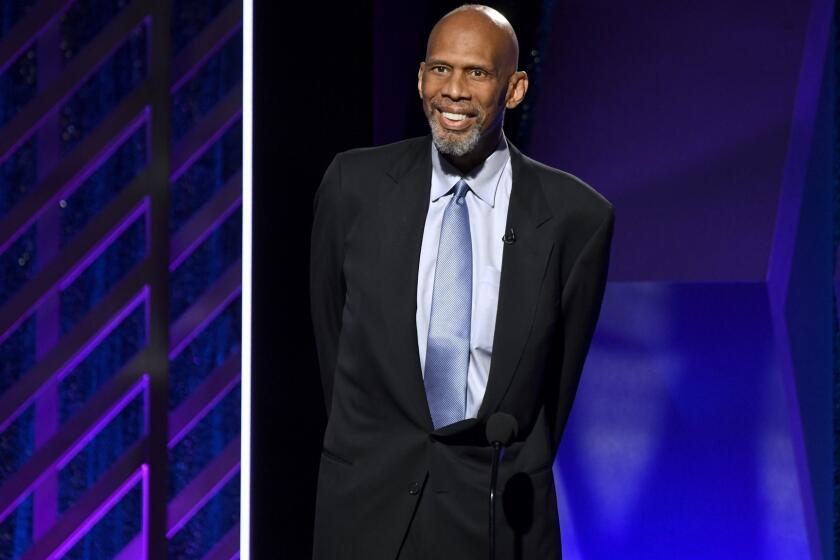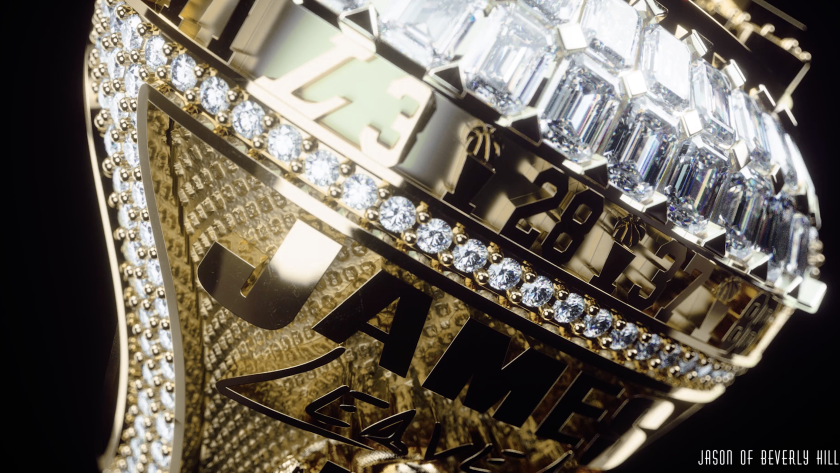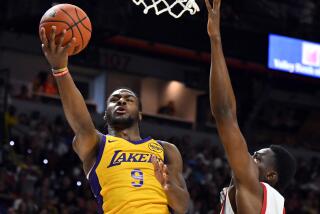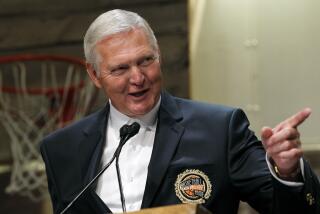Beneath the bling: Lakers championship rings feature many special surprises
- Share via
Coiled snakes and small etchings, like hieroglyphics. Jewels whose exact carat weight holds a secret meaning. You can spot all the clues, if you look closely enough.
The ring that each Lakers player received for winning the 2020 NBA championship is mostly gold and diamonds, glitz and audacity, but there is something subtle lurking beneath the gleam.
The jeweler responsible for the design wanted to document a basketball season unlike any other, a year marked by more than wins and losses. In the space of one — albeit very large — ring, Jason Arasheben has concealed visual references to the death of Kobe Bryant, a global pandemic and social unrest. He calls them his “Easter eggs.”
“We had a lot going on last year,” says Arasheben, who owns the tony Jason of Beverly Hills. “It’s not just how many diamonds you use, it’s how you tell a story.”
Professional sports bling has been a tradition since the early 1920s, when the New York Giants baseball team handed out rings as an alternative to the pocket watch chains, cuff links and engraved tie clips that previously had been given to players.
Simple and stylish was the rule for many years until the New York Yankees went big and brash in the 1970s, igniting an arms race that now has teams in various sports trying to outdo each other — more gold, more gemstones — season after season.
2020 should have been the greatest year for sports fans with the Lakers and Dodgers winning titles, but Kobe Bryant’s death and the coronavirus changed that.
The Lakers will not disclose how much they spent on this latest salvo. With 180 grams of yellow gold and 804 jewels in each, the rings could be worth more than $20,000, setting a new benchmark in extravagance.
If this raises some eyebrows at a time of hardship, team executives believe the players deserve a special gift for persevering through the season. Arasheben wanted to give them a sort of time capsule, an effort not lost on star forward LeBron James.
“It was just a culmination of what we’ve been through,” James told reporters after getting his ring. “So many ups and downs, a lot of adversity.”
And a lot of story to tell.
- Share via
::
The helicopter crash that killed Bryant, his 13-year-old daughter Gianna and seven others on Jan. 26, 2020 had the team reeling, struggling to comprehend the loss of an icon who had retired only a few seasons earlier. Before the shock wore off, the coronavirus shutdown brought the NBA to a lurching halt.
By the time games resumed and the Lakers defeated the Miami Heat to win it all in mid-October, there wasn’t much time to make rings for the start of a new season. Team executives called Arasheben. Though best known for such celebrity clients as Drake, Jennifer Lopez and the late Michael Jackson, the 44-year-old jeweler had worked with the Lakers before.
“It was like a puzzle. We had to be creative in how we built things in.”
— Jason Arasheben
“It made sense because he gets the pulse of this team,” says Linda Rambis, executive director of special projects and confidante to co-owner Jeanie Buss.
A flurry of discussions ensued, ideas flying back and forth.
Some design elements were entirely conventional, starting with a purple-and-gold logo on the face, framed by block letters spelling “World Champions.” The right side, or shank, featured each player’s name and jersey number. The left shank listed the Lakers’ playoff opponents and results of each series. This boilerplate information out of the way, Arasheben set to work on smaller touches with larger meanings.
The purple “L” in the logo was fashioned from 17 amethysts, one for each of the 17 championships in franchise history. They weighed .95 carats, a nod to the 95 days that players had spent inside the “bubble,” a Florida complex where all NBA teams lived and competed when the season resumed. Yellow diamonds in the basketball-shaped background totaled .52 carats, equaling the number of regular-season victories.
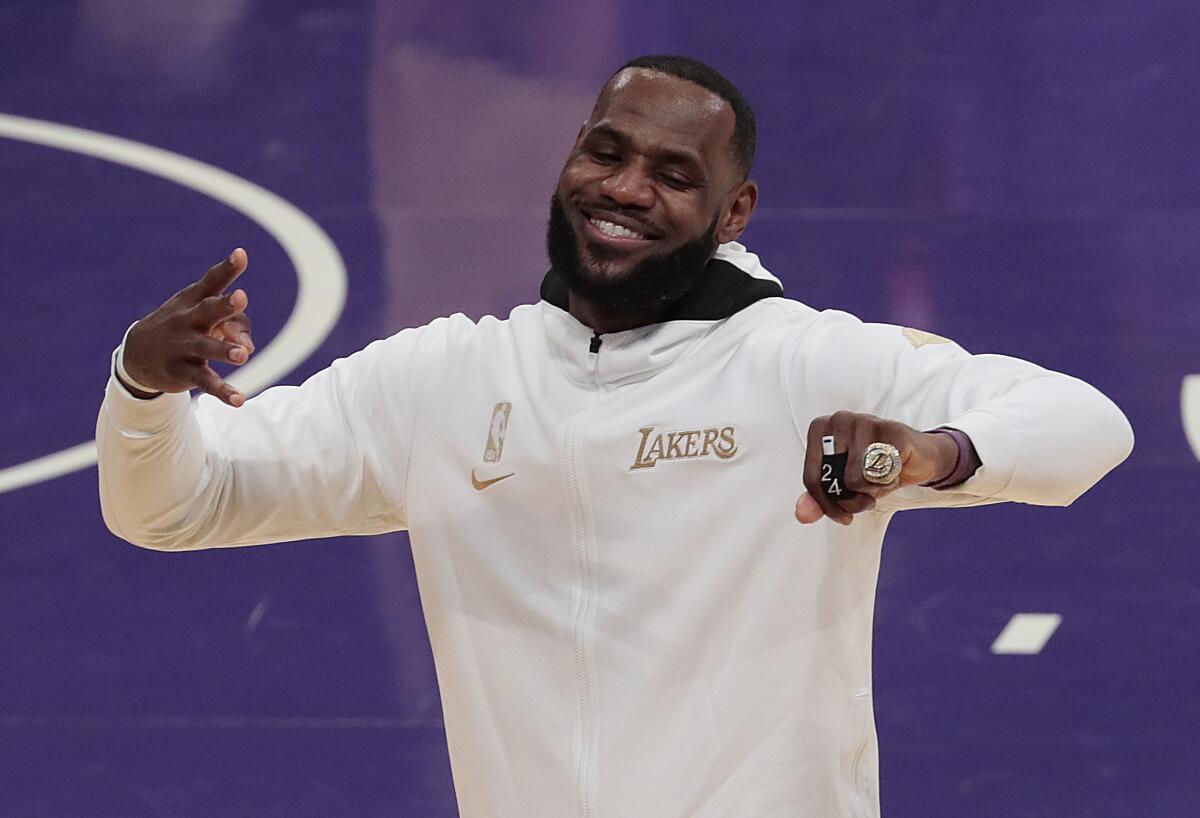
“It was like a puzzle,” Arasheben says. “We had to be creative in how we built things in.”
There was room to coil two snakes — an homage to Bryant and his “Black Mamba” nickname — behind the jersey numbers. The shanks, shaped vaguely like basketball hoops, got a mesh background. With each addition, it seemed Arasheben or the team would think of something else.
“How do you recognize all of the challenges we went through last year, and then all the bright spots?” Rambis asks. “It was just us wanting to have all of those elements in the ring.”
The work suited Arasheben, a man with a backstory of his own.
::
The boy loved to draw, doodling portraits, copying the blueprints his architect father brought home. His parents had a different sort of future in mind, telling him: You’re a good talker. You should be a lawyer.
Pre-law classes at UCLA failed to satisfy Arasheben’s artistic bent; they also put him in debt. A friend told him about wholesale stores in the fashion district, so he pooled his money and drove downtown to buy silver trinkets and brightly colored, plastic butterfly hair clips, cheap stuff he could get for $8 a dozen. Back on campus, fellow students stopped by his table and paid well over cost.
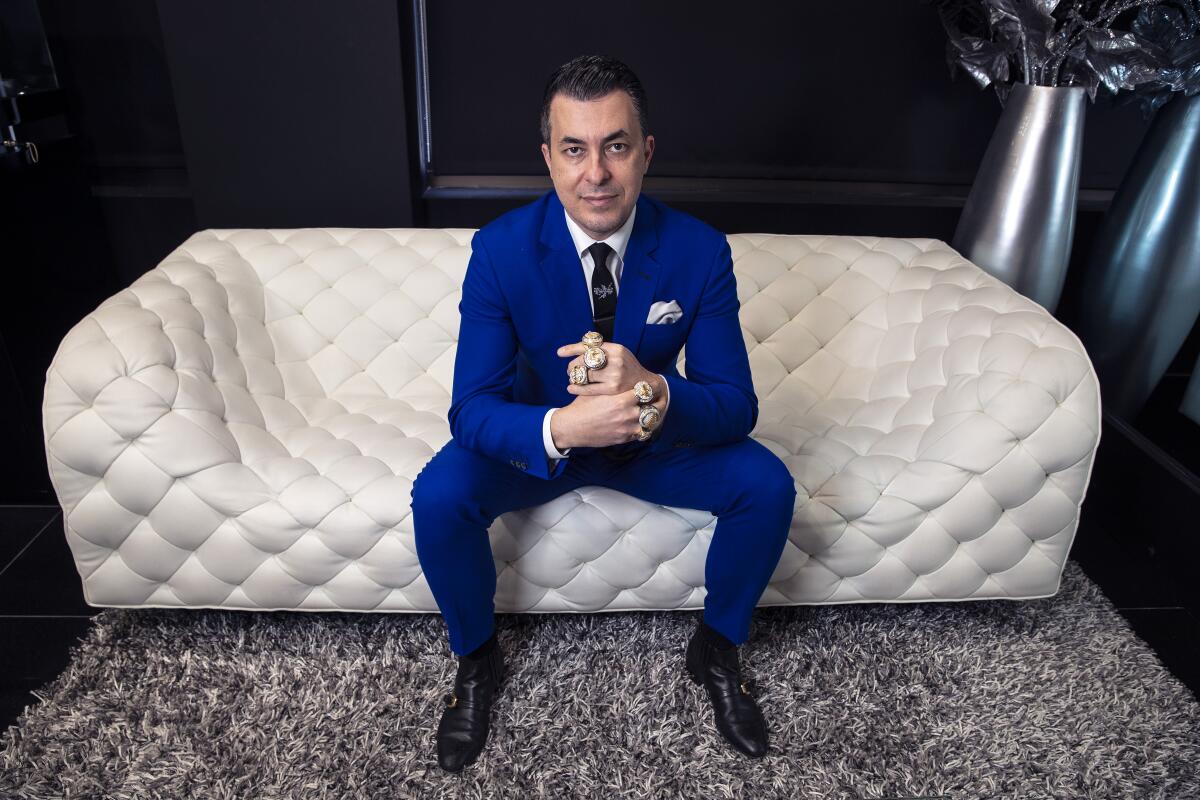
“The very first day,” he recalls, “I did $100 in sales.”
These profits paid off tuition with enough left over to hang out at nightclubs where, as an avid NBA fan, Arasheben recognized players among the regulars. They all seemed to be wearing what he recalls as “over-the-top, monstrous” jewelry, which gave him another idea.
Despite an utter lack of experience in the business, he began sketching ornate chains and bracelets, incorporating names and personal details of certain players. Slipping into the club’s VIP section, he approached them, straining to speak over the pounding music: “I’d love to design jewelry for you. In fact, I happen to have a drawing right here.”
They almost always shooed him off, waving away the paper he held in their face. But in 2002, the late New York Knicks star Anthony Mason took a look and liked what he saw. It was both a defining moment and a problem because Arasheben had no idea what to do next.
LeBron James and Anthony Davis discuss the triumphs and tragedies of 2020, from an NBA title to Kobe Bryant’s death to the COVID-19 pandemic and more.
Stalking the jewelry district, walking from shop to shop, asking questions, he found someone to make the monogrammed bracelet for $50,000. Not only was the profit margin healthy — he says Mason paid $60,000 — the work was creative. Arasheben networked at the NBA draft and All-Star game, meeting other players.
Forget law school, he thought. I want to get into jewelry.
::
Most teams rely on such established jewelers as Tiffany or Jostens for their rings, so there was no reason to think Arasheben could break into the business. But while selling custom pieces, he made friends with the Buss family that owned the Lakers. Wrangling a meeting with the late Jerry Buss, he told of starting from nothing, a story that seemed to click with Buss, who had built a fortune in real estate.
“I really had no business making their rings,” Arasheben says. “He gave me a chance.”
Things went smoothly at first; the team liked his design of 14 diamonds and white gold in 2009, evoking the white uniforms that players wore on Sundays to honor broadcaster Chick Hearn. Arasheben satisfied Bryant and guard Derek Fisher, who asked to have each player’s face etched on the shank.
“Other manufacturers have tried to outdo us. This year, we tried to outdo them one more time.”
— Ring designer Jason Arasheben
But after years of making a few pieces at a time, it was tough producing a batch of 200 or so for players, staff and others. With sleeping bags strewn across the factory floor, Arasheben and his crew worked around the clock.
“We were taking shifts,” he says. “I think we delivered the last ring 30 minutes before the ceremony.”
The team rehired him in 2010, which led to orders from European soccer teams and the Dodgers when they won the 2017 National League pennant. Arasheben made rings for the Golden State Warriors as they captured three NBA titles in four seasons.
“We knew what we did like and we knew what we didn’t like,” Warriors forward Andre Iguodala says in a team video. “From there, we said ‘Use your imagination.’ ”
After the 2018 championship, some Warriors players wanted a blue face, some preferred white. Arasheben engineered a reversible face with diamonds on one side and sapphires on the other. At the team’s ring ceremony, video shows Iguodala demonstrating the switch to others on the bench, telling them to give the face a twist.
“You’re supposed to?” teammate David West asks.
Coach Steve Kerr tries it and blurts: “Oh my god.”
The 2020 Lakers ring posed a different problem as Arasheben kept adding features. Around the rim, he put tiny etchings of the Larry O’Brien Trophy and jersey numbers for every player on the roster that season, even those waived or assigned to the G League before the playoffs.
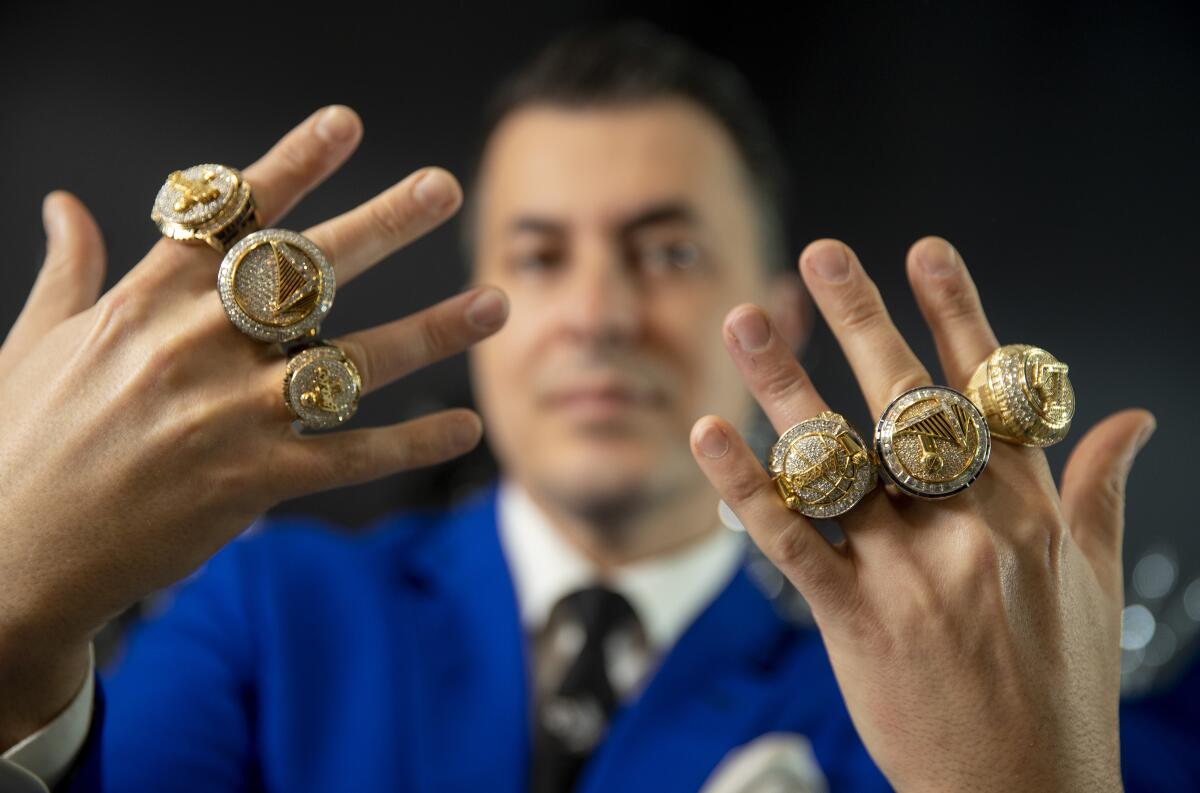
The left shank had room for a small NBA logo, featuring the silhouette of former Lakers great Jerry West. On the right, Arasheben fit the team’s mantra that season, “Leave A Legacy,” along with the player name and number and snakes.
Still, he needed more space.
::
The first championship rings, the ones handed out by the New York Giants in 1922, were relatively simple. Brushed gold, a single diamond, nothing to set the world on fire but the timing was right.
“Pocket watches were going out of fashion,” says John Odell, a curator at the National Baseball Hall of Fame and Museum. There was no need for jeweled fobs or watch chains because “no longer was it stylish to show off a little bling across your belly.”
The new trend began with relatively tame signet rings, then graduated to something in the neighborhood of a high school class ring. More size translated into more detail; legendary football coach Vince Lombardi took charge of the design for his Green Bay Packers in the late 1960s and made sure to include a crown from his family crest.
There have been a few small quirks in recent years. After a squirrel bounded across home plate during the 2011 playoffs, the champion St. Louis Cardinals included a tiny image of the rodent. Two years later, the Boston Red Sox — known for their unshaven appearance — stamped a beard on the inside of their rings.
But glitz and bulk have dominated since New York Yankees owner George Steinbrenner splashed “NY” in diamonds across the face of a large ring in 1977 and an even bigger one in 1996. The Lakers noted the trend in 2000, engraving “Bling Bling” on their shank. Three years later, the Florida Marlins spent a reported $20,000 each for a design encrusted with hundreds of diamonds.
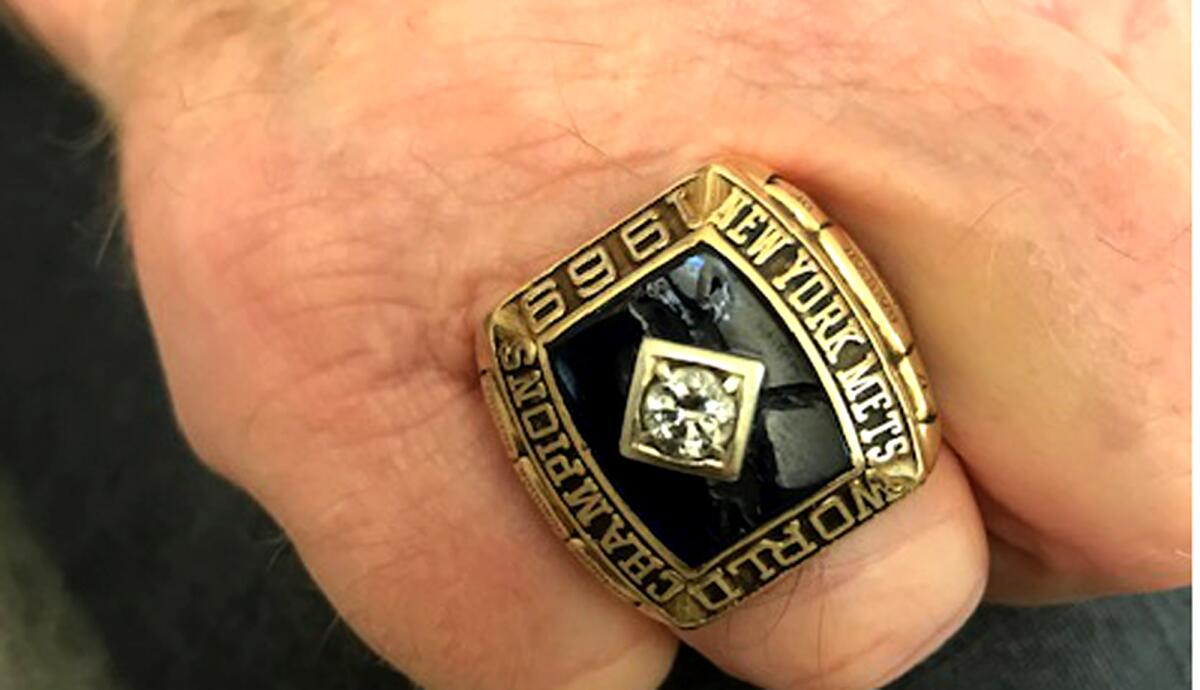
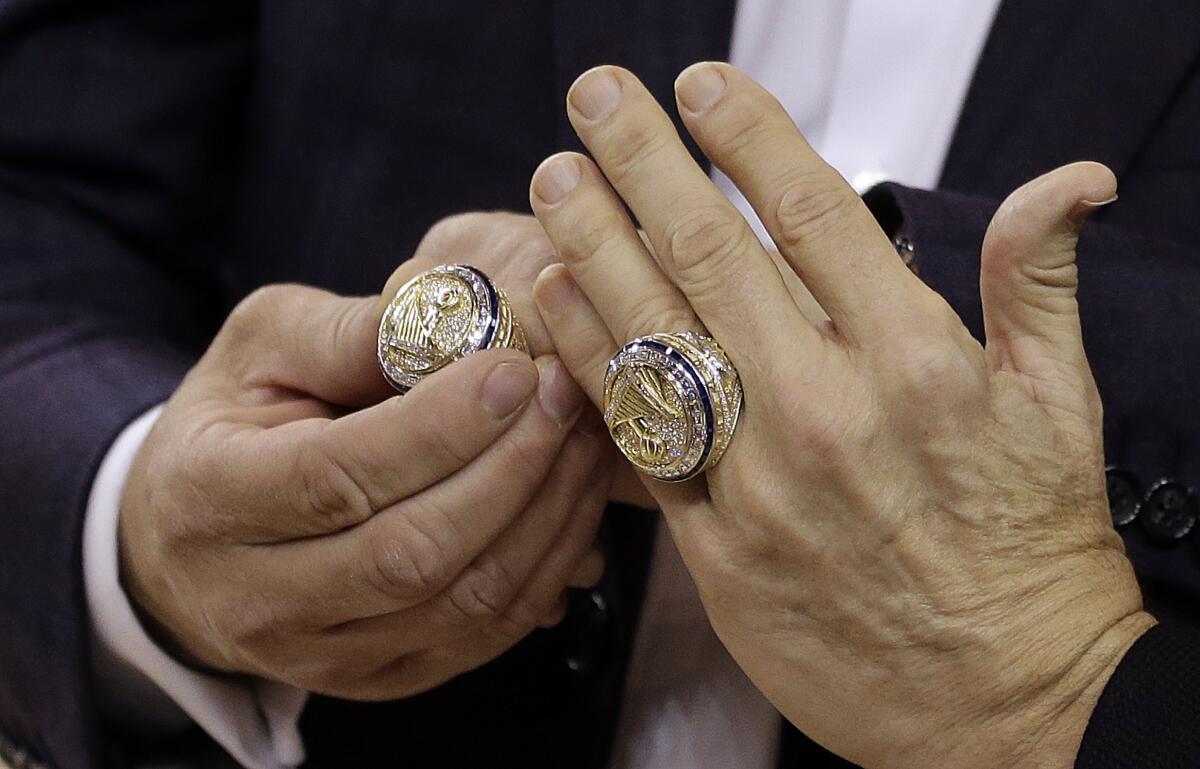
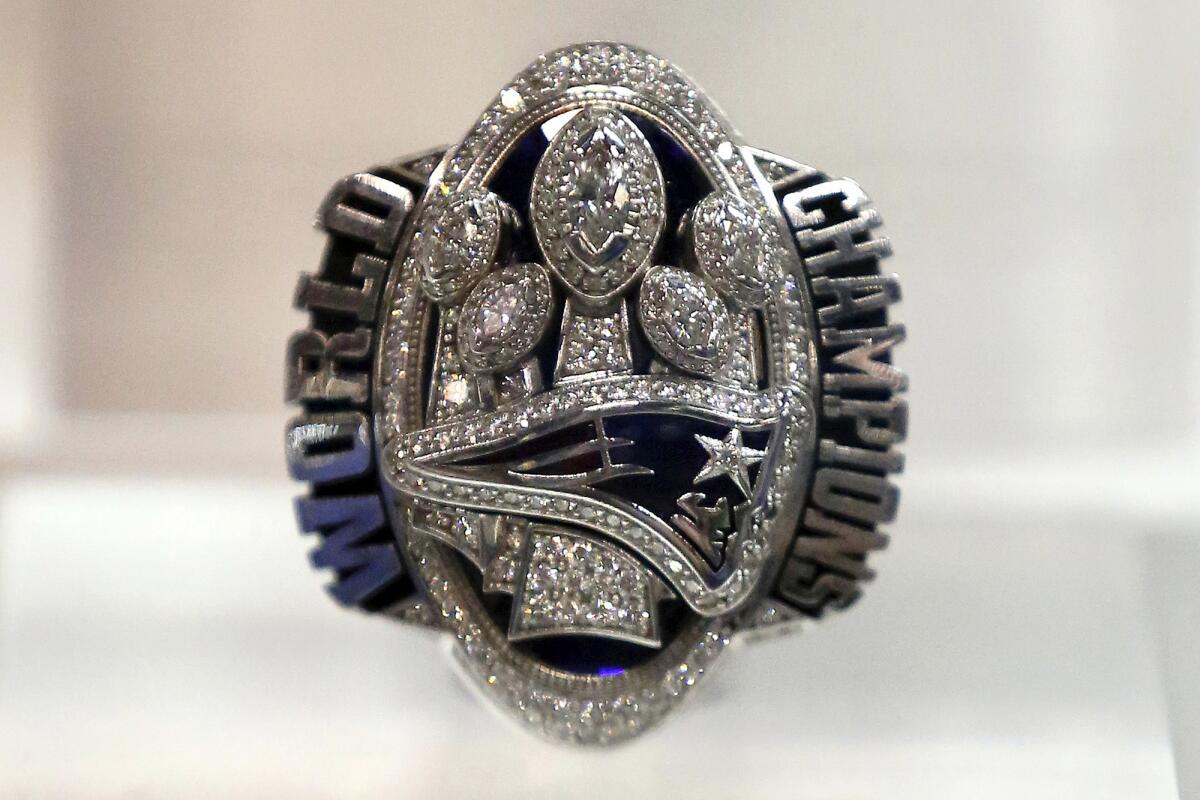
“Overtly ostentatious,” Odell calls it.
Team owners were spending far more than the modest allowances the NFL and Major League Baseball afforded its winning teams. As weights topped three ounces, the rings had become so large that Jostens suggested wearing them “on your middle finger may be more comfortable in terms of balance.”
Arasheben acknowledges the trend is “getting a little ridiculous. It’s getting to the point where you’re just going to give the players a diamond plate.” But that didn’t slow him down with the Lakers this winter.
“Other manufacturers have tried to outdo us,” he says. “This year, we tried to outdo them one more time.”
::
There were 71 days between the title-winning game against the Heat and the ceremony the Lakers wanted to hold at their season opener in December. Most of that time was spent on design.
When Arasheben finally ran out of space, he reached back to an old trick with the detachable face. Same solution for a different problem.
“This time,” he says, “we needed to create more real estate.”
Kareem Abdul-Jabbar is auctioning off four of his five Lakers championship rings — 1980, 1985, 1987 and 1988 — among a collection of hundreds of personal memorabilia.
A 45-degree twist reveals a secondary face underneath, bearing images of the 12 retired jerseys that hang in Staples Center, including the one with a microphone instead of a number for Hearn. Bryant’s two jerseys — he wore No. 8 and No. 24 during his career — are accentuated in a darker color. As further tribute, a snakeskin texture serves as the background.
This gimmick also left space to reference last spring, when Americans took to the streets, protesting the death of George Floyd.
Pro athletes in basketball, baseball and other sports staged walkouts. James helped form More Than a Vote, an organization that has fought voter suppression and drew more than 42,000 volunteers to work at polling stations for the November election. Arasheben used the underside of the face to etch the word “Unity.”
“We wanted something the players could show their grandchildren,” he says. “Something to remember.”
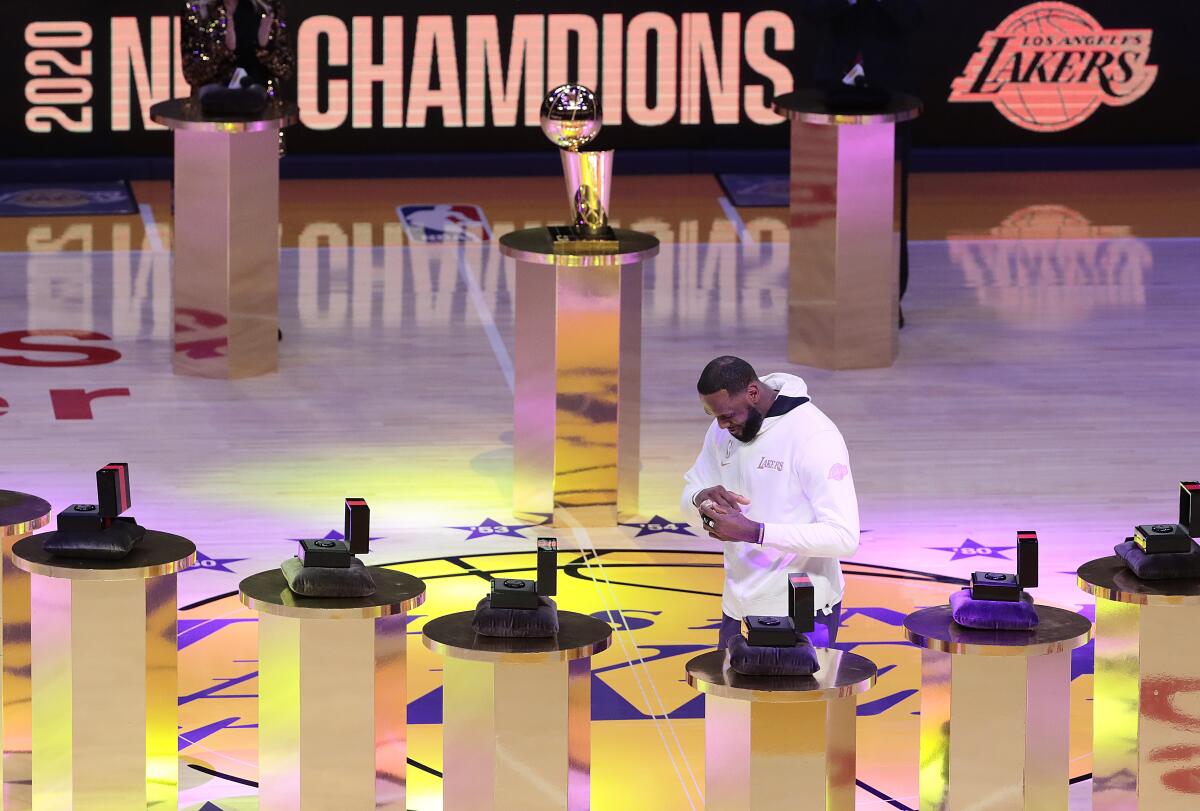
The rings were handed out at an unusual ceremony last month, the stands empty because of coronavirus restrictions. Players stepped up, one by one, to podiums at midcourt while family members spoke from the videoboard above. “I know this has been a very difficult year for everyone here,” NBA Commissioner Adam Silver said.
Still, James called it a “pretty cool feeling” to celebrate with teammates, a chance to look back on all they had been through. “So many story lines,” he said.
And only one ring to tell them.
- Share via
More to Read
All things Lakers, all the time.
Get all the Lakers news you need in Dan Woike's weekly newsletter.
You may occasionally receive promotional content from the Los Angeles Times.

